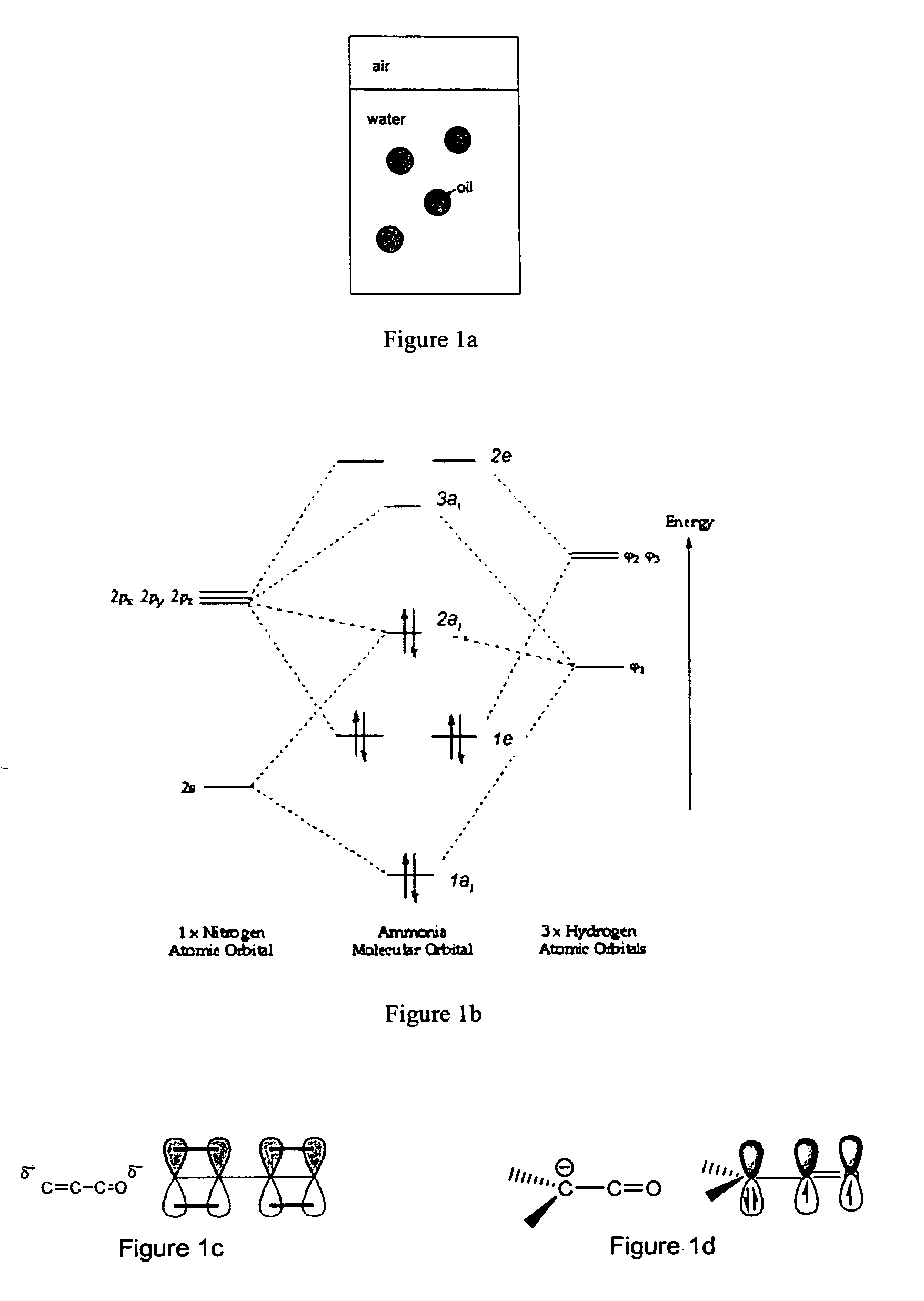Malodor covering perfumery
- Summary
- Abstract
- Description
- Claims
- Application Information
AI Technical Summary
Benefits of technology
Problems solved by technology
Method used
Image
Examples
example 1
Fruity—Floral Perfume
[0122]
partsALLYL CAPROATE1.0AMYL CINNAMIC ALDEHYDE1.9BENZYL ACETATE7.5BENZYL SALICYLATE12.1CIS-3-HEXEN-1-OL0.1CYCLACET4.5d-LIMONENE5.0DYNASCONE 10% DPG0.7ETHYL 2-METHYLBUTYRATE PURE FCC3.0ETHYLENE BRASSYLATE5.3FLOROL0.5FRUCTONE1.5GALAXOLIDE 50 DEP13.7GAMMA UNDECALACTONE2.5GERANIOL1.3HEDIONE5.8HEXYL ACETATE0.9HEXYL CINNAMIC ALDEHYDE3.0IONONE ALPHA REGULAR2.6IONONE BETA0.7ISO E SUPER1.2LIFFAROME1.7LILIAL3.2LINALOOL4.5LINALYL ACETATE1.5LYRAL1.0MANZANATE1.5MAYOL0.9METHYL IONONE GAMMA A1.8METHYL PHENYL CARBINYL ACETATE0.7PHENYL ETHYL ACETATE0.2PHENYL ETHYL ALCOHOL2.2ROMASCONE0.5TRICYCLODECENYL PROPIONATE0.5TRIPLAL0.5UNDECAVERTOL0.9VERDOX3.5100.0
[0123] The second example is a citrus floral perfume that provides excellent ammonia coverage and is stable in the same formulation as above in which it was put at 1%. (See Example 2.)
example 2
Citrus-Floral Perfume
[0124]
ODORANTSPARTSALPHA TERPINEOL3.5alpha-DAMASCONE0.5BACDANOL2.5BENZYL ACETATE15BENZYL SALICYLATE2.5CIS-3-HEXENYL ACETATE0.1CITRONELLOL1.5FRUCTONE2DIHYDROMYRCENOL20DIMETHYL BENZYL CARBINYL ACETATE1.5d-LIMONENE22ETHYL 2-METHYLBUTYRATE0.4GALAXOLIDE 50 DEP4.4GAMMA UNDECALACTONE0.2GAMMA-DECALACTONE0.2GERANYL ACETATE1HEDIONE4.5HELIONAL2ISO E SUPER3ISOAMYL ISOVALERATE0.2MANZANATE0.4AMYL VINYL CARBINOL1.5NOPYL ACETATE2.5PATCHOULY OIL1.2PHENYL ETHYL ALCOHOL4.9ROSE OXIDE (HIGH CIS)0.5TRIPLAL0.5LIFFAROME1NEOPROXEN0.5100
[0125] The “woody-musk perfume” provided in Example 3 has very good ammonia coverage when put at 1% in the permanent dye less crème described above as well.
PUM
| Property | Measurement | Unit |
|---|---|---|
| Fraction | aaaaa | aaaaa |
| Fraction | aaaaa | aaaaa |
| Fraction | aaaaa | aaaaa |
Abstract
Description
Claims
Application Information
 Login to View More
Login to View More - R&D
- Intellectual Property
- Life Sciences
- Materials
- Tech Scout
- Unparalleled Data Quality
- Higher Quality Content
- 60% Fewer Hallucinations
Browse by: Latest US Patents, China's latest patents, Technical Efficacy Thesaurus, Application Domain, Technology Topic, Popular Technical Reports.
© 2025 PatSnap. All rights reserved.Legal|Privacy policy|Modern Slavery Act Transparency Statement|Sitemap|About US| Contact US: help@patsnap.com



